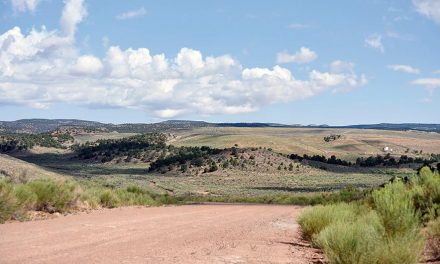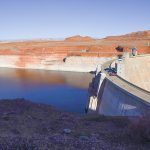
Letters | A reminder of Nez’s failure with jobs, businesses
As the campaigning for the election for Navajo Nation president is set to begin, and in commemoration of President’s Day 2022, I would like to remind the Navajo people of President Jonathan Nez’s lack of accomplishments in developing jobs and businesses.
From the get-go, Nez campaigned that he and his administration will be “working together” under his proclamation of Ahil Na’anish.
But it is when you look at the Nez administration’s failure to create jobs and businesses that stands out for the Navajo voter to decide if whether he meant what he proclaimed or that his words were just political phrases to get votes.
A comparison of Nez against his predecessors says a lot. Every elected Navajo Nation president since Albert Hale has developed some form of economic policy initiative. Hale initiated the Local Governance Act, Kelsey Begay started in 1998 for the takeover of business-site leasing from the Bureau of Indian Affairs, which was officially implemented in 2005.
Starting in the new millennium, President Joe Shirley Jr. placed into effect the creation of the Navajo Community Financial Institution and the standing-up of a tribal 8(A) corporation, the Diné Development Corporation, while President Ben Shelly succeeded in a public referendum vote on the Navajo sales tax to create an economic development fund to fund economic projects.
And although there are disagreements regarding the Nataanii Development Corporation, the corporation was incorporated as a federal Section 17 corporation under the administration of President Russell Begay.
From those presidents, each of them contributed with the intent on helping Navajo businesses and the Navajo economy. Even one-term presidents like Kelsey Begaye, Ben Shelly and Russell Begay added an economic policy measure. So, President Nez has no excuse to say he didn’t have enough time.
If you look at Nez’s predecessors, they created measures in local authority, business land leasing, lending opportunities, a corporation to access federal contracting, public funding to fund economic development projects and a corporation that is exempt from certain non-Navajo taxes. And to date, all of Nez’s predecessors’ six major economic measures are still active policy measures existing as either a tribal program or as a company.
So, what about President Nez’s great big economic initiative? Does he have one? We will get back to those questions later, but I’m sure you already know the answer.
Now imagine, being the leader of the largest populated tribe, leading a tribal nation having the highest rate of poverty, 50% unemployment, high drop-out rates, high teen pregnancy rates, just to name a few social and economic disparities, and you have a toolkit with various economic policies your predecessors left you with, what do you do to address those disparities?
With Nez as that leader, he chose to not lead in creating jobs and developing businesses.
What Nez only can show for in his presidency are presidential proclamations — political platforms on paper that have no effect of impact, authority or funding.
To the many tribes across the country, the measures Nez’s predecessors created are a tribal government and a Native business’ dream, a full economic toolkit to create jobs, develop businesses and generate new tax revenue for the tribal government to fund law enforcement, education, and social service programs.
Unfortunately for the Navajo Nation, Nez never bothered to look back to seize and appreciate his predecessors’ initiatives.
If Nez was true to his so-called “working together” proclamations, he would have worked with those initiatives, but he chose not to honor his own proclamation under those terms.
And with that, Nez also failed to accomplish what every Navajo president accomplished – establishing an economic measure under his presidency.
If Nez couldn’t come up with his own economic initiative, at the very least he could have moved to work back toward coalescing his predecessor’s measures and propose a way for each of those measures to work with each other.
Another option for Nez could have been going back to each measure and work toward updating and modernizing those measures to our current times. Not only did Nez not come up with his own economic initiative, but he also didn’t bother to do anything to work with or improve upon his predecessor’s initiatives.
And recently, Nez was given another chance to transform the Navajo Nation’s economic landscape, yet he chose to allocate only 4.5% for Navajo businesses from his proclaimed “once in a lifetime moment” $2 billion ARPA funding. This miniscule amount couldn’t put a dent into the Navajo Nation’s 50% unemployment rate or the 75% Navajo dollar leakage rate to border towns.
Lastly, Nez will argue that he created construction of the Shiprock hotel, completed the Nahata Dzil and Burnside shopping centers, was responsible for the completion of his own Shonto Chapter gas station and hotel, and funding for the operation of the Church Rock rubber glove factory. But these projects were carried over from his predecessor’s work, which make those projects not his initiatives.
In conclusion, with the election five months away, President Nez can’t campaign that he’s for Navajo businesses or proclaim to be about “working together.”
Nez’s presidency has shown he can’t do both and the voters shouldn’t believe he will do so should the Navajo people vote him a second presidency.
Daniel Smith Sr.
Shiprock, N.M.
Battle over spending while precious time wasted
The battle over the allocation of the American Rescue Plan Act continues while wasting precious time.
I was very concerned when Delegate Amber Kanazbah Crotty submitted the new ARPA fund proposal on Jan. 20: The Naabak’iy’ati Committee had tabled the “expenditure of ARPA monies to support COVID-19 mitigation projects” and now multiple proposals are being considered in the division of infrastructure projects divided between districts.
What happened to following the guidelines outlined by the U.S. Department of Treasury?
The second priority listed in the capital projects fund states, “The coronavirus capital projects fund takes critical steps to addressing many challenges laid bare by the pandemic, especially rural America and low-to-moderate income communities, helping to ensure that all communities have access to the high-quality, modern infrastructure needed to thrive, including Internet access.”
May I change one word in “modern infrastructure needed” to “survive?” Water is essential to life.
Rural areas on the reservation do not have access to necessities of life. Did the COVID-19 experience not teach us anything?
Finally, there is a proposal that offers a reasonable, thought out compromise, placing the installation of water, electricity and internet infrastructure first. President Nez even budgeted funds for other Diné infrastructure and delegates’ districts.
We have what is most important: Leadership looking at the big picture, the welfare of Diné as a whole.
Life is not fair. Dividing the balance of $1.07 billion equitably between districts is impossible.
Consider the needs of people in populated areas such as Window Rock and Tuba City. Most of the housing is rented (or subsidized) and already has running water, electricity and Internet access.
So how do these Council delegates select projects and assign funds?
Consider more rural communities where most homes are built on remote home sites. Their needs for the basic necessities are costly and often not met.
What about their children with limited access, if any, to the internet for their education? Do we not remember the articles published in the Navajo Times about our children’s challenges to participate in their education during the worst of COVID-19?
There are a host of new problems if you divide remaining funds between delegate’s districts. Take into account the installation of water/waste water systems:
- Homeowners will now have to petition their needs to chapter leadership.
- Follow-up discussions to access the needs will take place.
- Negotiating with third-party sources to calculate and provide a quote for the cost of a project.
- Voting by chapter members to determine who receives funds.
- Who oversees the installation of a project?
- How are funds distributed and who ultimately completes the job?
- What guarantees does a homeowner have the installation will be correct and completed?
- This all eats up time. It’s mind-boggling and many homeowners will simply give up.
With the initial outbreak of COVID-19 early in 2020, the Navajo Tribe was swift in its messaging to stay home, stay safe and social distance. Masks were distributed. Tribal employees worked from home and the tribe had the highest vaccination numbers when they became available.
We went from being the hottest spot for COVID-19 in the United States to being an area with the lowest cases.
Mutations of COVID-19 will continue to impact our lives. Now is the time to install the modern infrastructure to protect our people going forward.
Think of the millions of dollars almost lost in 2021 because the monies were not spent on necessities of electricity, water and internet access. Are we facing the same outcome this coming year?
Council delegates, get back to the provisions outlined in the coronavirus capital projects fund. Keep it simple. President Nez’s proposal is the most equitable proposal we have today.
NTUA was already moving forward with installations last year until funds were stalled. Requirements for water/waste water installations were provided, applications taken, home-site surveys started.
NTUA has the processes, staff and expertise to get the job done. Are we going to have to completely start over?
Diné living in remote areas need the modern infrastructure to survive before time runs out and funding is lost. Move on this. Approve President Nez’s ARPA proposal.
Lafe Damon
Crystal, N.M.







 Highway 264,
Highway 264, I-40, WB @ Winslow
I-40, WB @ Winslow